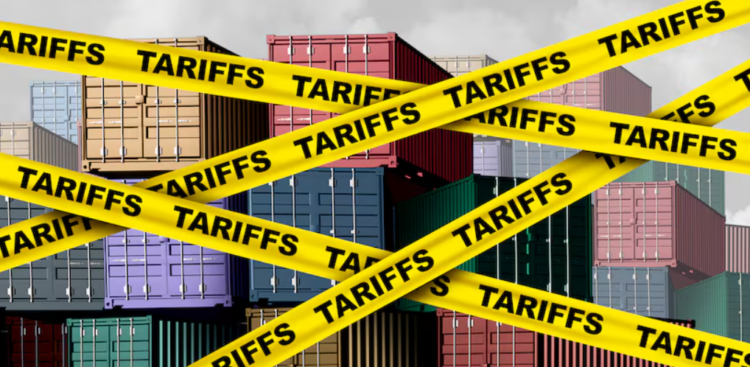Publisher: Maaal International Media Company
License: 465734
Higher U.S. tariffs will extend uncertainty for businesses, experts say
اقرأ المزيد
President Trump’s executive order hiking tariffs on U.S. imports could drive up consumer prices and prolong uncertainty for millions of businesses, trade experts said, according to CBS NEWS.
Materials issued by the White House on Thursday outline new tariff rates for dozens of countries, but details remain scant on how to implement the trade agreements, said Barry Appleton, co-director of the New York Law School Center for International Law.
“The last thing businesses want to have are unanswered questions. They were looking for certainty, and what we have instead is a gigantic Rubik’s Cube,” he told CBS MoneyWatch. “Everyone has been waiting for ‘Liberation Day’ to be finished,” he added, referring to the country-based tariff announcements Mr. Trump first made in early April. “Instead, with this announcement, we have another perpetuation of what’s going on.”
Under the Trump administration’s new import duties, most countries will face a baseline tariff of at least 15%, although other nations will faces levies of more than 40%. The U.S. effective tariff rate is now 17%, according to Fitch Ratings — the highest in decades.
That could mean pricier garments from Vietnam, shoes and toys from China, chocolate from Switzerland, and coffee from Brazil, according to economists. As a result, the revised U.S. tariffs could cost Americans an average of $2,048 per year, according to a new analysis from the National Taxpayers Union, a nonpartisan advocacy organization.
Mr. Trump has argued his tariff strategy is necessary to correct what he views as unfair trading practices and revive American manufacturing, and points to still-fairly-low inflation rates. But many economists warn tariffs can lead to higher inflation and more sluggish economic growth, and some of the president’s early trade moves rattled financial markets.
The White House has said that Mr. Trump’s trade policies benefit Americans.
“President Trump’s trade deals have unlocked unprecedented market access for American exports to economies that in total are worth over $32 trillion with 1.2 billion people,” White House spokesperson Kush Desai said in a statement to CBS MoneyWatch. “As these historic trade deals and the Administration’s pro-growth domestic agenda of deregulation and The One Big Beautiful Bill’s tax cuts take effect, American businesses and families alike have the certainty that the best is yet to come.”
On social media, U.S. Trade Representative Jamieson Greer said the tariffs are “a knockout win over the distorted global trading order that has disadvantaged American workers, farmers, and manufacturers for decades.”
He added that Trump’s foreign trade policy has achieved “expansive new market access for U.S. exporters, increased tariffs to defend critical industries, and trillions of new manufacturing investments that will create great American jobs.”
Which products could get pricier?
In the U.S., the products most commonly imported from abroad — and therefore most likely to see their prices rise because of sharply higher tariffs — include household appliances, furniture, cars, clothing, sports equipment, toys and cleaning products, according to an analysis from Oxford Economics.
The price of such goods rose about 1% in June, or more than double the increase in May, according to the investment research firm’s analysis of consumption data, a sign that tariffs are starting to seep into the cost of everyday items.
“The question is really what’s not going to go up in price. The costs were being eaten in the profits of companies, but that’s not sustainable,” Appleton said.
Mr. Trump slapped some of the highest tariffs on key trade partners like Canada, a major provider of lumber to U.S. companies. That could lead to higher housing costs, according to Oxford. Some fruits and vegetables also could get pricier this winter as grocery stores leans on imports to stock store shelves, he said.
U.S. automakers including Ford, GM and Stellantis have recently warned that higher U.S. tariffs will reduce their profits by billion of dollars. That is likely to increase new car prices, said Terence Lau, dean of the Syracuse University College of Law and formerly a government affairs executive at Ford.
“My advice to consumers back in April was that they should wait to buy cars,” said Lau, who expects dealer prices for 2026 models to rise between 4% and 6%. “In August, my advice is to buy now.”
Although many businesses are still selling inventory they imported earlier this year in a bid to avoid higher tariffs, subsequent imports will likely be subject to the newly announced levies when they arrive at U.S. ports, according to trade experts.
“A lot of businesses front-loaded goods to get them in the door before tariffs were announced. They’ll now have to increase their costs as inventories dwindle and businesses start replenishing them,” Oxford Economics’ senior U.S. economist Matthew Martin told CBS MoneyWatch. “We expect cost hikes to peak in the second half of the year,”
Along with facing potentially higher prices, U.S. consumers could face reduced product choices stemming from supply-chain delays, according to economists. That’s largely because companies unable to reshore manufacturing to the U.S. are likely to stop importing low-margin goods as they move to control costs.
“In many cases, tariffs will be so high that we’ll create embargoes,” Martin said. “That will make it more difficult for retailers and distributors to get things out to market.”
Rodney Manzo, a supply-chain expert and senior director at Sage, a business management software company, said higher tariffs often end up affecting businesses and consumers in ways beyond the cash register.
“For the average shopper, the effects don’t always show up as a big price hike on the shelf. Instead, it’s subtler — fewer options, smaller quantities and less generous promotions,” he said. “Companies are quietly reducing [their stockpiles], reworking product specs or stripping out expensive components to hit margin targets.”








